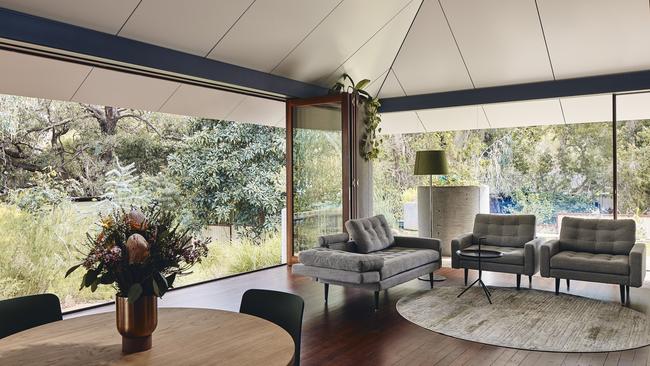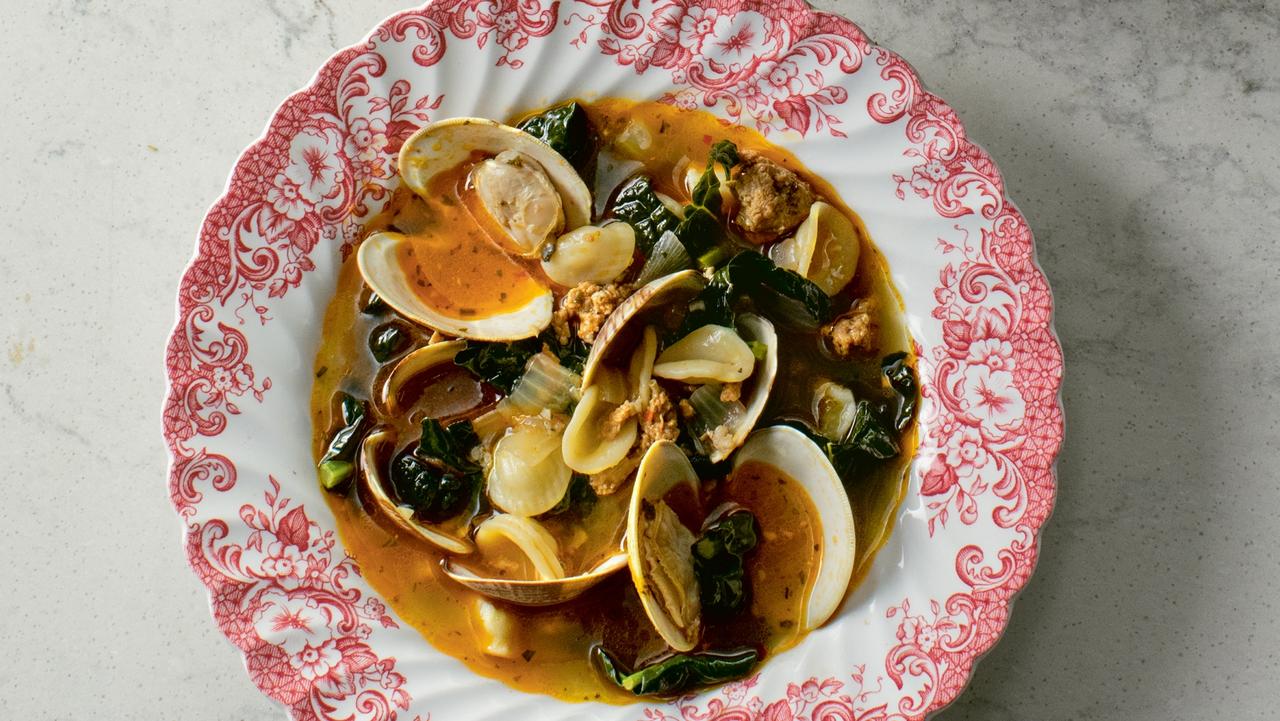Inside Celilo House: Andrew Boyne’s tribute to WA flora
The forward-thinking garden of architect Andrew Boyne’s Celilo House features a whopping 300 West Australian natives. It’s a place that celebrates the state and all of its wild splendour.

“The house was conceived as a tent in a garden,” says owner and architect Andrew Boyne of his home in the Perth suburb of Mount Lawley. “The objective then was to blend the house into its environment to foster connections with nature and community rather than being separated from those things that actually improve people’s lives.” The garden he created contains only West Australian natives, with nearly 300 species from across the state.
The modest house takes up just 120sq m of the 650sq m battle-axe site, where even the long access from the street is planted, “rather than being surrendered to cars”. Boyne designed the garden before the house, transforming a bare grass slope into informally terraced areas. It was planted before the house was built, arranged in four botanic regions of the state – Gascoyne, Fitzgerald and south coast, the Swan River plain and banksia woodland, and the karri forest. Most unusually for Perth’s dry sandplain, the property has two surface springs, which feed a pond near the house and irrigate the garden. The springs overflow into a creek and wetland, providing the sound of running water and habitat for four frog species.
Boyne grew many of his plants from seeds collected on holidays, including eucalypts from the Nullabor, hakeas from Cape Leeuwin and acacias from near the Bungle Bungles, making the garden a place of memory. Because almost all the plants were tiny tubestock when planted, their growth has been rapid, so that three years later the garden looks well established. “The best thing about the garden is how it helps us understand Western Australia,” says Boyne. “I now know the difference between a Beaufortia and a Verticordia. If I go on a walk in the bush I understand it better; it’s more interesting, and I care more about it”.


Special plants are grown in sections of concrete sewer pipe, which continue from the garden to intersect the glass of the house, blurring the distinction between in and out. “The garden is designed to be seen from the house, arranged in layers to create depth, light and shadow,” says Boyne. There’s a lawn for play, a shady terrace with Dichondra repens as a ground cover, and another open space with red pea gravel, providing different looks and purposes.
The house was built as “a veranda under a canopy roof”, with bi-fold doors on one side completely opening the internal space to the garden. As a sustainable house with carbon negative operation, it produces more energy than it consumes despite its small 3kw solar system. Largely passive summer cooling can be supplemented in heatwaves with an evaporative cooler. “On a 42C day last week, the house was 23C, using just 60c worth of electricity,” says Boyne. It has won several sustainability and architecture awards, including being named in the top five houses of 2023 by ArchitectureAU.
Both house and garden were built by Boyne’s family and friends, layering personal memories into the property. “Their stories are woven through all parts of the building,” says Boyne. “I was sitting with my young son in my lap yesterday watching a blue dragonfly zip over the pond while red-tailed black cockatoos screeched above. And I thought that it is about the best thing I’ve ever done.”
Q&A
My large fig tree gets plenty of fruit each year but only a handful ripen. Why?
Felicity Caire, Adelaide
Your climate is good for figs but they won’t ripen off the tree. Failure to ripen is often due to water stress; they have shallow roots. Other causes are insufficient sunlight, low air and soil temperatures, humidity, fluctuating weather, and lack of nutrients. You can remove the smallest green figs in midsummer to direct energy into ripening the remainder.
In this dry summer, I dump a bucket of water on each fruit tree every four or five days. I also scraped away the white gravel mulch and put chook poo down as organic matter. Do these two practices need to be spread out over the whole rootzone or can I do it in a couple of places?
Tom Pryor, Laura, SA
Ideally you should cover the whole rootzone. Applying fertiliser increases the trees’ need for water, so in drought hold off. The white gravel mulch will help keep the roots cooler and moister. Trees carrying fruit need plenty of water, so try to recycle as much household water as possible for them. Seasol, applied regularly, helps trees cope with drought. A soil wetting agent can also help water penetrate and hold.
No matter what I plant – parsley, papaya, staghorn, stephanotis – they’re beset by grasshoppers. How can I eliminate them?
Russ Caldwell, by email
Eco-neem controls grasshoppers – it’s organic and has some deterrent properties. Otherwise catch grasshoppers with a net on cool mornings when they’re slowest, or make traps of canola oil in yellow containers. You could also cover plants with exclusion fabric.
Send your questions to helenyoungtwig@gmail.com. The best question for April wins a copy of Visionary: Gardens and Landscapes for our Future (Hardie Grant, $70) by Australian photographer Claire Takacs. March’s winner is Jon Cartwright of Melbourne for his question about staking trees.
More Coverage








To join the conversation, please log in. Don't have an account? Register
Join the conversation, you are commenting as Logout